
When field corn (as opposed to sweet corn or ensilage corn) is dry and ready for harvest it looks like this. The moisture in the corn needs to drop, meaning leave the cob, the stalks and leaves to a proper level so it won’t mold. We harvest (pick) corn around a 12 or 14. It’s 12 in this photo.
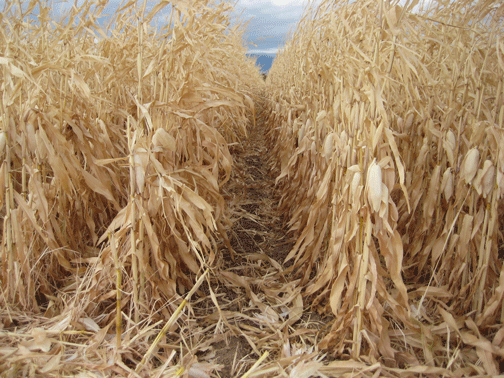
This is a deer run. You can see how they beat a path through the rows. They even make beds inside the corn, which show up on Google earth like circles.
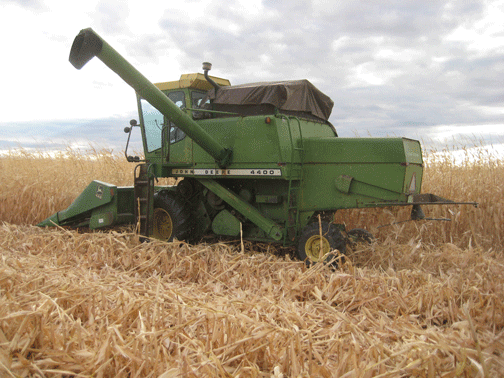
This is the corn combine. We have another one to combine beans. Our equipment is old by most farmers’ standards, but it works for us and it’s paid for. We joke because DH has several combines, five to be exact, but two of them are for parts. When you have old equipment you need to have parts for when they break down…we live too far away from Tractor Salvage yards so we keep a small herd for repairs. 🙂
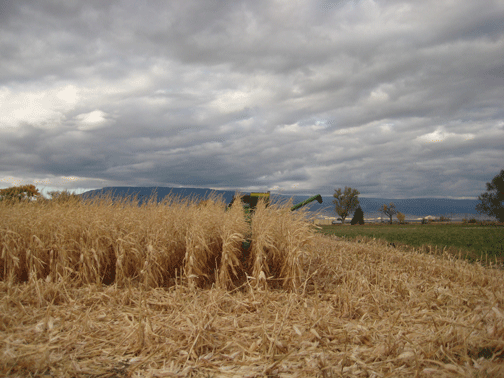
You can see the combine moving down the field. This combine takes four rows at a time.
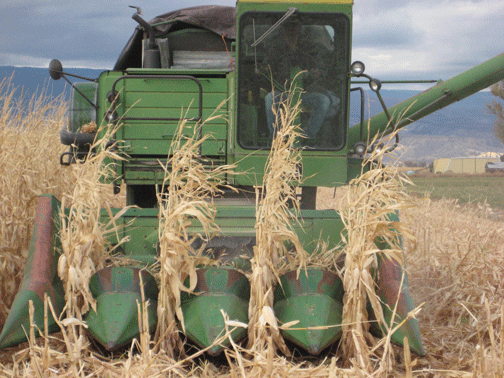
This is a better view. Beacause of how DH plants the rows a four-row header works the best for us.

The combine strips all the corn off the cob and spits it out

And leaves the field looking like this! Later on in the year (the hay has to be totally dead or it will bloat the cows) we will turn the cows out to run the whole 80 acres. They love these cobs and stalks and the corn that gets spilled. It’s a favorite food to them.

The combine stores the corn until the HOPPER is full. Then DH dumps the corn into the back of our truck. I call this liquid gold.
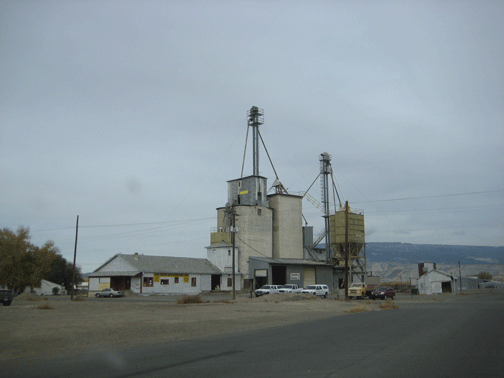
We take all our corn to the Delta Elevator, but other people have contracts with Foster Farms.
Delta Elevator also sells some of our hay for us. We have customers that come to the farm, but the Elevator also contracts with us.
Here the corn is turned into feed for all types of corn eating animals.
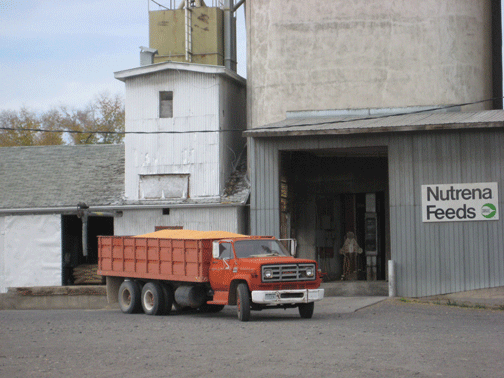
Each load is weighed in before unloading. After unloading the truck is weighed again. This is how the farmer is paid. I’m not sure what the price is this year, it’s down from the last couple of years.
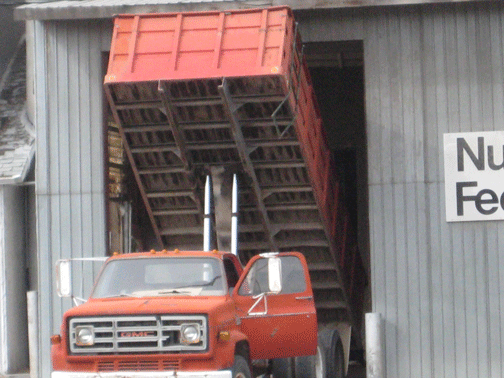
I would have gone in to take pictures of the corn sliding into the shoot, but they didn’t want me in there….something about safety.
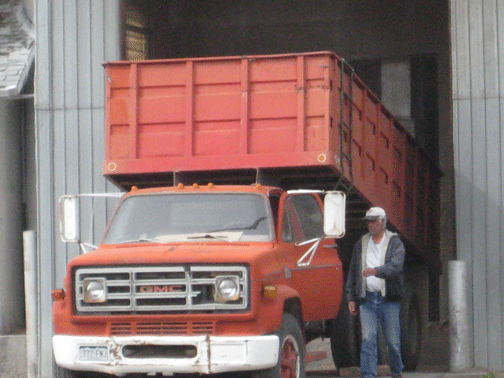
And it starts all over again until the field is completely done for another year.

Those people and their safety issues. Don’t they know a blogger needs the real photos? DH looks pretty good about the whole thing.
LikeLike
When I was young my father raised corn along with other crops, We hand picked it for years using a wagon and team of horses. Then he got a corn picker and that was a happy day. After he picked it he would turn the cows in to clean up the field. I loved to watch a cow get a whole ear of corn and work so long to get it just right so she could chew it. In the winter Dad sould chop ears of corn in small pieces and add to the dairy cows feed. They did love the corn cobs and all.
LikeLiked by 1 person
Nice to see how it’s done. Most of it gets silaged in this neck of the woods.
LikeLike
‘Small herd for repairs’…so funny! My husband has a small herd of miscellaneous junk/parts (depending on who you talk to) for fixing stuff! People around here buy corn stalks to decorate, and I just saw they are going for $8 bucks a bunch of about 5 stalks. Yikes!Straw is $10/bale.
LikeLike
I sure miss seeing those sights! We have corn fields but nothing like they do out west!
LikeLike
Oh what a great educational blog about harvesting field corn this is!
Many people have never even seen a combine, or a Grain/Feed Mill where the corn is weighed, stored, and sold, or even known what a field of dry corn looks like.
….and the many steps in harvesting this product of GOLD!
Indeed it is PURE GOLD from beginning to end product!
I always love to watch the herd when they first go into the harvested corn fields<—-the gals just look like they hit the
"candy store"! Contented Milk Cows/ or Beef Cows for sure!
Linda – I hope in your spare time you Scrapbook! You have a wonderful knack for perfectly connecting your photographs with stories!
LikeLiked by 1 person
They say You Learn Something Every Day. Well this city slicker just learnt how the corn kernels we buy in a tin get from a plant in the ground to the place where it is processed. I guess in some places they cook it and place the corn into tins. Great post, Linda, thanks for showing us.
LikeLike
It’s amazing how dry your area is – great post!
LikeLike
Your post would make a good educational book. So many don’t understand how products get to market. Your crop looks great.
Europe has their castles but the western US and Canada have wonderful rustic grain elevators. I like ours better, but I’m prejudice. Fun to see the deer run.
LikeLike
Lovely to see the whole process in one blog. I’ve seen these combines riding on the street but I never really new how those big ‘teeth’ went between the rows like your photo shows…
LikeLike
Fascinating! Great post. As always. Thanks 🙂
LikeLike
It does look like liquid gold, so so pretty. There is such a beauty in the harvest.
LikeLike
Wow, that was interesting. I have to admit though I was most taken by the photos of your beautiful land with that wide open sky. Just God’s country to me.
LikeLike
Wow! Jim tries to tell me how all this works but I have a hard time visualizing it – your pics explain it all!!
LikeLike
Wow, this is so interesting. Here in Ireland we are having a shortage of hay because of all the rain this summer. Some places in the world are too wet, others too dry, can’t win eh?
LikeLike
This is very interesting! one of the farm produces that imported to Indonesia.another largest import product is soybean. Do you know where it grown in USA ? Thank you for stopping by my blog and the like. Your blog is awesome.
LikeLike
Oh, these pictures are BEAUTIFUL. Especially those first two. Sort of mythic somehow. I love them.
LikeLike
thanks so much for this information. I find it very interesting. I also look at the harvesting of other veggies, love to watch them.
thanks again
LikeLike
i like it its awesome how they harvest the corn Beautiful
LikeLike
Pingback: October 23, 2013 | Life on a Colorado Farm
Thank you for writing this. I was driving through rural Ontario, Canada today and wondered why the corn hadn’t been harvested as the “season” for fresh corn is past. Now I understand!! Thank you again.
LikeLike
What a great series of photos – thanks!
LikeLike
oh my goodness…that looks like a lot of work, but I guess those big combines do most of it.
When I lived on our 100 acre ranch we did hay and that is a hard job too, but it was mostly for our own cows….and yes I remember once we went and gathered up a bunch of left over silage from a corn field and threw it out to our cows…boy did they love it…
Thank you for the trip thru your fields of corn and how its is done.
LikeLike
I work in education and am creating a course on corn, following it from the field, through the ethanol production process and then the return of distillers grains as animal feed back to farms. You have some great images showing corn harvest and if possible, I would like your permission to use them in my course. This is not a commercial course and will not be used for profit. The images I am interested in are 3, 4, 5 and 8 in your blog post. Feel free to contact me via email to discuss further. Thank you!
LikeLike
Fascinating. I love the idea of keeping combines for parts.
LikeLike
First of all, thank you for a very interesting and enjoyable post! You do such a great job showing us how things are done on the farm. But, I do have a question. You clearly know a lot about corn. I’ve searched everywhere and can’t find an answer to my question. How does one find “non-sweet” corn? When I was a young girl in the 50s and 60s, my mother would make “fried corn” (actually it was creamed corn, but that’s what she called it) from corn that was decidedly not sweet. She did not add sugared ther, and to this day I crave the taste of that corn. But, everywhere I look, the corn is sweet, sweet, sweet! Do you have any suggestions for where I might get the type of corn that is not sweet? Thanks for any help!
LikeLike
In the old days, it was much easier. None of this going into factories and getting cross-pollinated. Just simply grow the corn and sell it in the market or someplace else.
LikeLike